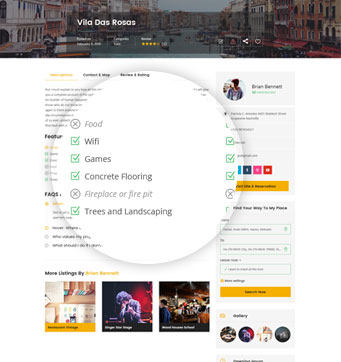Brand Activations in Experiential Marketing
Experiential marketing is a dynamic field that leverages immersive, personal experiences to connect brands with consumers on a deeper level. At the core of this strategy, brand activations emerge as the catalysts that ignite consumer interest and engagement. These activations are not just about showcasing products or services; they are about creating tangible, personal connections with consumers that foster a deeper understanding and appreciation of the brand. This blog post delves into the role of brand activations in experiential marketing, exploring their significance, how they can be effectively implemented, and the challenges and best practices in measuring their impact.
The Power of Brand Activations
Brand activations are strategic, immersive experiences designed to connect consumers with a brand on a personal level. These activations can take many forms, from product demonstrations and pop-up events to digital campaigns that offer a tangible interaction with the brand. The key to a successful brand activation lies in its ability to make an emotional connection with the consumer, engage them intellectually, and include a physical interaction during the engagement. These experiences are not just about showcasing products; they are about creating a narrative that resonates with consumers on a deeper level .
Creating Memorable Experiences
The success of a brand activation hinges on its ability to create memorable experiences that stand out from the crowd. Brands that have successfully built buzz with memorable activations, such as the first-ever human anamorphic billboard or OREO Cakesters’ Blockbusters Takeover, have done so by making their activations engaging, emotional, and personal. These experiences are not just about showcasing products; they are about creating a narrative that resonates with consumers on a deeper level .
Shareable and Promotional Content
To maximize the impact of brand activations, brands can create a range of shareable and promotional content. This includes offering free photos during the activation, setting up live streams to reach audiences worldwide, and incorporating over-the-top props to create an immersive environment. Encouraging consumers to take photos or videos with these props and share them on social media not only enhances the experience but also amplifies the brand’s message .
The Importance of Impressions
In the world of branding, the goal is to make positive impressions on consumers. Research suggests that it takes 5 to 7 impressions for people to remember a brand. Brand activations are a powerful way to achieve this, as they provide multiple opportunities for consumers to interact with the brand in a meaningful way. By strategically planning these activations, brands can increase brand awareness, impressions, and ultimately bring in new customers .
The Future of Experiential Activations
As brands continue to innovate, the landscape of experiential marketing is evolving. From Gucci’s venture into the metaverse with their own NFT to Nordic Spirit’s multi-sensory experience in London, companies are pushing the boundaries of what’s possible in experiential marketing. These initiatives serve as inspiration for other brands looking to create engaging, in-person experiences that tell a compelling visual story while staying true to their brand’s story and values .
Measuring the Impact of Brand Activations
Measuring the ROI of experiential brand activations remains a challenge for marketers. Despite the evolution from guerrilla marketing to a multi-billion-dollar category, marketers still struggle to present a unified set of ROI metrics. According to a first-of-its-kind study done in 2023 by Reach3 Insights and The Keller Advisory Group, 69% of consumers say they like brand experiences, compared to just 48% who like traditional advertising. Once consumers engage with brand experiences, they find them more relevant than traditional advertising, with 51% saying so compared to 25% who feel traditional advertising is more relevant .
Challenges in Measuring ROI
An effective experiential activation can have a massive impact on a brand. The challenge is that, as an industry, we have struggled to align around key metrics and accurately demonstrate ROI. Most brands still take a bubble-gum and duct tape approach to the measurement and metrics. Understandable, given that quantifying the impact of experiential can be tricky for a few key reasons:
- Siloed and fragmented data: The ultimate objective of Experiential Brand Activations is to enhance brand perception, drive engagement, and influence purchase decisions. A combination that makes its attribution challenging because they are measured in discrete ways and on discrete channels. Generating a complete picture requires cobbling together data from different silos.
- Success is ill-defined: Lacking clear goals and metrics makes success elusive. Vague objectives lead to generic metrics like foot traffic, offering limited insights into business impact.
- After-the-fact metrics: Unlike traditional advertising, experiential activations have a short life span. And because marketers rely on conventional metrics like foot traffic and social impressions. Direct feedback is collected in exit surveys and other sources of after-the-fact metrics. Capturing the qualitative aspects of the experience – the emotions, the connections, the brand sentiment days, if not weeks later . Best Practices for Measuring ROI
To address these challenges, industry experts advocate for three pillars of testing and discrete norms. These pillars include:
- Quantitative Metrics: While qualitative insights are crucial, quantitative metrics such as foot traffic, social media impressions, and conversion rates provide a solid foundation for measuring the impact of brand activations.
- Qualitative Insights: Collecting feedback through surveys, interviews, and social media can provide deeper insights into consumer perceptions and experiences.
- Long-term Impact Analysis: Understanding the long-term impact of brand activations requires tracking metrics over time and analyzing the data to identify patterns and trends that indicate the effectiveness of the activation . Conclusion
Brand activations play a pivotal role in experiential marketing, offering a unique platform for brands to connect with consumers on a personal level. By focusing on creating memorable, shareable experiences that make an emotional connection, brands can enhance their perception and foster a deeper, more meaningful relationship with their audience. As the world of marketing continues to evolve, the importance of brand activations in experiential marketing will only grow, making them a strategic tool for brands looking to stand out in the crowded marketplace. Measuring the impact of these activations, however, remains a challenge that requires a multi-faceted approach, combining both quantitative and qualitative metrics to provide a comprehensive view of their success.






